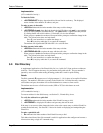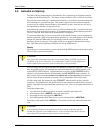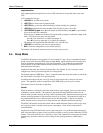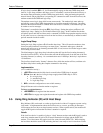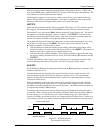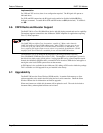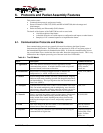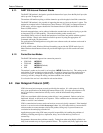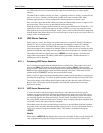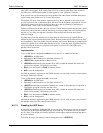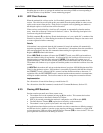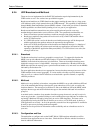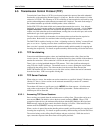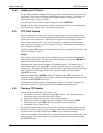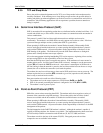
Feature Reference DART 300 Modem
Page 38 2110212 Rev 1.0
6.1.1. DART 300 Internal Protocol Stacks
The DART 300 modem is designed to provide the bottom four layers, from the Physical layer (the
radio) up to the Transport layer.
The modem will handle acquiring a cellular channel to provide the physical and link connections.
The DART 300 modem is also capable of supporting the next two layers at the user’s option. The
modem has complete built-in Transmission Control Protocol (TCP) and User Datagram Protocol
(UDP) stacks, and also supports both Serial Line Internet Protocol (SLIP) and Point-to-Point
Protocol (PPP) services.
Network communications can be achieved without the attached end-user device having to provide
an integrated TCP or UDP capability. The modem includes packet assembly and
disassembly (PAD) services to handle the formation of serial data into packets with the required
protocol headers. Simply select the desired built-in protocol by using the appropriate AT
commands and begin your data transfer.
For applications with intelligent hosts using their own software stacks, the modem can be used in
SLIP or PPP mode.
If SLIP or PPP is used, Windows Dial-up Networking can provide the TCP/IP stack (layer 4).
Other Windows-based Internet clients can provide the higher layers for file transfer and other
services.
6.1.2. Packet Service Modes
The DART 300 modem supports four connection protocols:
• UDP PAD +WS45=0
• TCP PAD +WS45=1
• SLIP +WS45=3 (Default)
• PPP +WS45=4
The modem’s packet service mode is set in register +WS45 (Packet Service). This setting can be
made before or after registration on the network. It cannot be changed once the modem starts a
session (is on-line). If a change to packet service is required, the user must close the current
session (go off-line), change the setting, and then establish a new session.
Use of each of the services is described in sub-sections below.
6.2. User Datagram Protocol (UDP)
UDP is the most basic transport protocol provided by the modem. It is a thin protocol, adding
only a port specification to the underlying Internet Protocol (IP). It has the same features as IP;
that is a best effort, connectionless delivery service, with the chief benefit being minimum
overhead.
UDP is not considered reliable because packet delivery is not guaranteed. Packets can be lost,
duplicated, delayed, or delivered out of sequence. These conditions are not detected, and the
sender or receiver is not informed.
UDP is connectionless because sender and receiver are never logically connected. If the intended
receiver is not active and available the message is lost. It is a best effort delivery, because the IP
software makes an earnest attempt to deliver the packets, failing only if system resources are
overloaded or the underlying networks fail.
Application programs using UDP must accept full responsibility for handling the problems of
reliability, including message loss, duplication, delay, out-of-order delivery, and loss of
connectivity.
Programmers often treat these problems casually. Testing done when using highly reliable, low
delay local networks may not expose potential failures. This explains why many applications that



